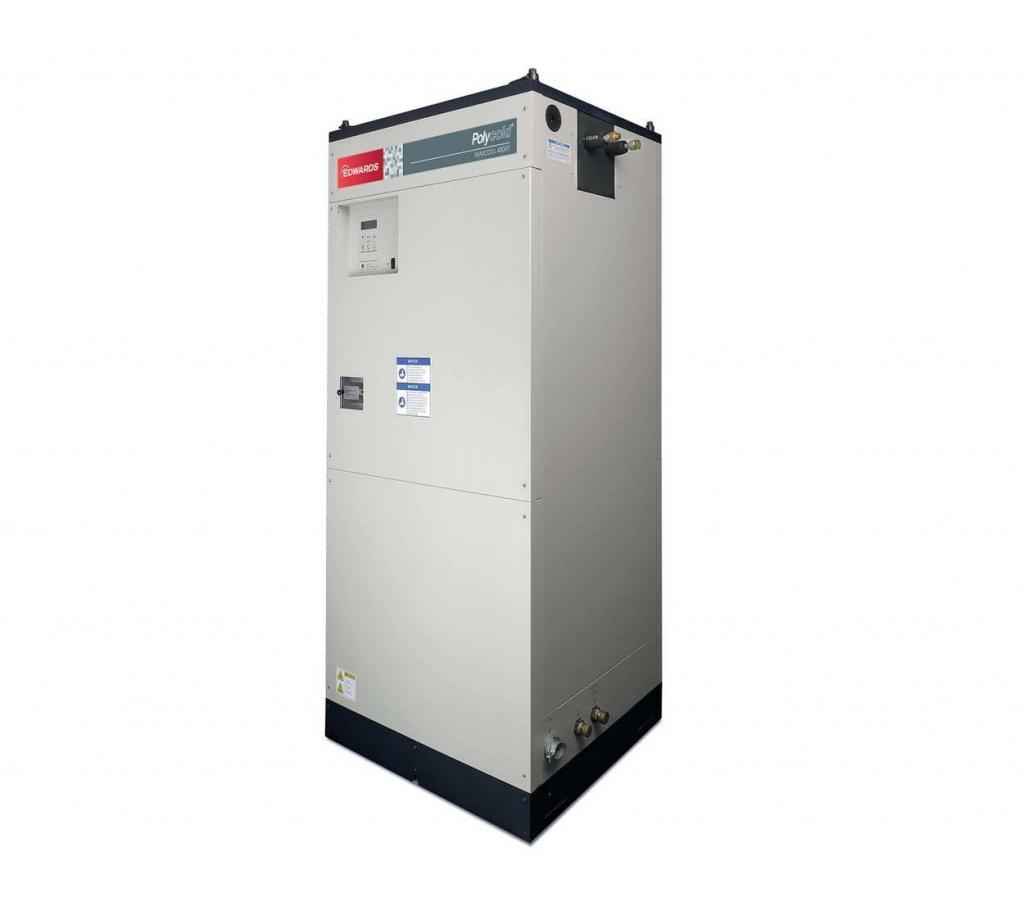
When added to your vacuum system, MaxCool Cryochillers can dramatically reduce pumpdown times and increase product throughput. The MaxCool will pump water vapour within minutes from start and can defrost in less than four minutes, giving true fast-cycle capability. It also has an option called Rapid Cool to Cool, which eliminates the waiting period after defrost, enabling your system to perform more production cycles per shift. Using patented Polycold® refrigerant mixtures, our MaxCool Cryochillers work on the principle of Meissner trapping. Water vapour is captured by condensation on a cryogenically cooled surface, called a Meissner coil. The Meissner (cryocoil) is mounted directly in the vacuum chamber so conductance is not limited by ports, manifolds, valves and baffles. The cryocoil is easy to install and can be adapted to fit any system. It does not need a high vacuum valve.
| MaxCool 2000 | MaxCool 2500L | MaxCool 4000H |
|---|---|---|---|
Maximum Cooling Capacity | 2,000 W | 2,500 W | 4,000 W |
Temperature at Maximum Cooling Capacity | -111 °C | -120 °C | -98 °C |
Coldest Temperature | -142 °C | -145 °C | -133 °C |
Ultimate Operating Pressure (25% of max pumping speed) | 3E-9 torr | 8E-10 torr | 5E-8 torr |
Typical Cold Trap Area | 1.1 m2 | 1.4 m2 | 2.2 m2 |
Maximum Water Vapor Pumping Speed from Typical Cold Trap Area | 163,900 l/s | 208,600 l/s | 327,800 l/s |
Conservative Maximum Cold Trap Area* | 1.5 m2 | 2.0 m2 | 2.8 m2 |
Electrical Consumption (Standby Mode) | 5.5 kW | 11.4 kW | 12.0 kW |
Electrical Consumption (Cool Mode, Typical Load) | 6.2 kW | 13.9 kW | 12.4 kW |
Electrical Consumption (Cool Mode, Max Load) | 8.8 kW | 19.2 kW | 19.2 kW |
Cooling water flow for 13 °C | 6.8 l/min | 15.1 l/min | 15.1 l/min |
Cooling water flow for 18 °C | 9.1 l/min | 18.2 l/min | 18.2 l/min |
Cooling water flow for 24 °C | 13.6 l/min | 27.3 l/min | 27.3 l/min |
Cooling water flow for 29 °C | 27.6 l/min | 54.1 l/min | 54.1 l/min |
European PED-Compliant | Yes | Yes | Yes |
Nontoxic Refrigerants | Yes | Yes | Yes |
Non-flammable Refrigerants | Yes | Yes | Yes |